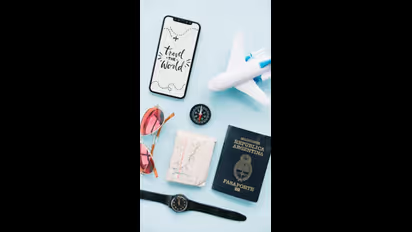Travel smart: 5 essential tips to protect your devices and data
Published : Aug 19, 2024, 04:43 PM IST
As travel season begins, protect your devices and data from cyber threats. Follow these simple tips to stay secure and avoid common online risks while on vacation. By following these guidelines, you can enhance the security of your devices and data during your travels.
Explore the latest Lifestyle News covering fashion, wellness, travel, Food and Recipes, and more. Stay updated with trending Health News, fitness tips, and expert insights to inspire your daily living. Discover personalized lifestyle trends that keep you stylish and informed. Download the Asianet News Official App from the Android Play Store and iPhone App Store for everything that adds value to your everyday life.
Read more Photos on
